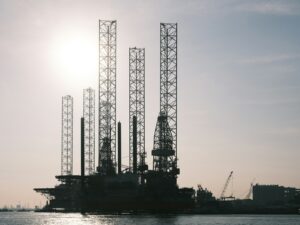Breaking down the environmental impact of the world’s largest cruise ship
Royal Caribbean’s Icon of the Seas vessel has now completed its maiden voyage, raising serious alarm about the ongoing impact of the cruise industry.
![]()
Departing from Miami, US, on 27th January, the 1,200ft long ship ferried 7,600 passengers around the idyllic Caribbean islands for seven days, with many of those designations already suffering the ravages of over-tourism. Carrying 40 restaurants and 20 decks, a 55ft tall waterfall, seven swimming pools, and six slides, the behemoth seems at odds with where tourism should be heading in the coming years.
Ahead of embarkation, Bloomberg ran an analysis of the vessel’s impact, quoting Bryan Comer of the Marine Program, International Council on Clean Transportation [ICCT], and a study that showed cruising itself could generate up to double the total greenhouse gas emissions of a four-star hotel on land and round-trip flight. This is direct output only, and did not take into account the fact most passengers fly to their choice of port before they find their cabins and head out onto the waves, adding even more to that footprint.
According to Royal Caribbean, there’s a 24% efficiency improvement on the Icon compared with the international standard for cruise ships. As the article points out, this is in addition to a 30% energy-efficiency gain that the industry has had to find since 2014 due to new rules and regulations. When it comes to this specific boat, the use of liquified natural gas (LNG) will contribute to some of the wins, which burns far more cleanly than traditional marine fuels.
However, percentages can be misleading, and LNG has a major issue – the increased risk of producing methane, a gas that has led to far more global heating to date compared with carbon dioxide. Something Comer has been quoted elsewhere as ‘a step in the wrong direction’. In fact, the ICCT believes the fuel might lead to 120% more life-cycle greenhouse emissions than oil.
One of the key problems is the lag between development of technology and approved application. Icon has been almost a decade in the making, and looking back at its inception reveals a rather shortsighted belief in LNG as a great choice for shipping. In between then and now, a lot has changed about this perception, partly because more research is now being done about methane’s contribution to the climate crisis.
The pandemic was the most significant world event to unfold in that time, and at one point Covid-19 threatened to be the cruise industry’s complete undoing. Of course, we were rather naive ourselves to think that could ever happen in the long run, but the recovery within tourism as a while, but specifically cruises, sounds another alarm bell. Cruise Lines International Association predicts 36million passengers across the world this year, much more than the 2019 record of 30million. Numbers that show more and more people are opting to holiday this way, meaning the urgency with which impactful efficiencies must be introduced is only getting greater.
More on transport:
https://environmentjournal.online/uncategorised/can-tfls-off-peak-fridays-boost-public-transport-ridership-in-london/
https://environmentjournal.online/headlines/uks-new-council-for-net-zero-transport-could-accelerate-transition/
https://environmentjournal.online/headlines/confectionary-giant-announces-switch-to-electric-trucks-for-european-logistics/
















